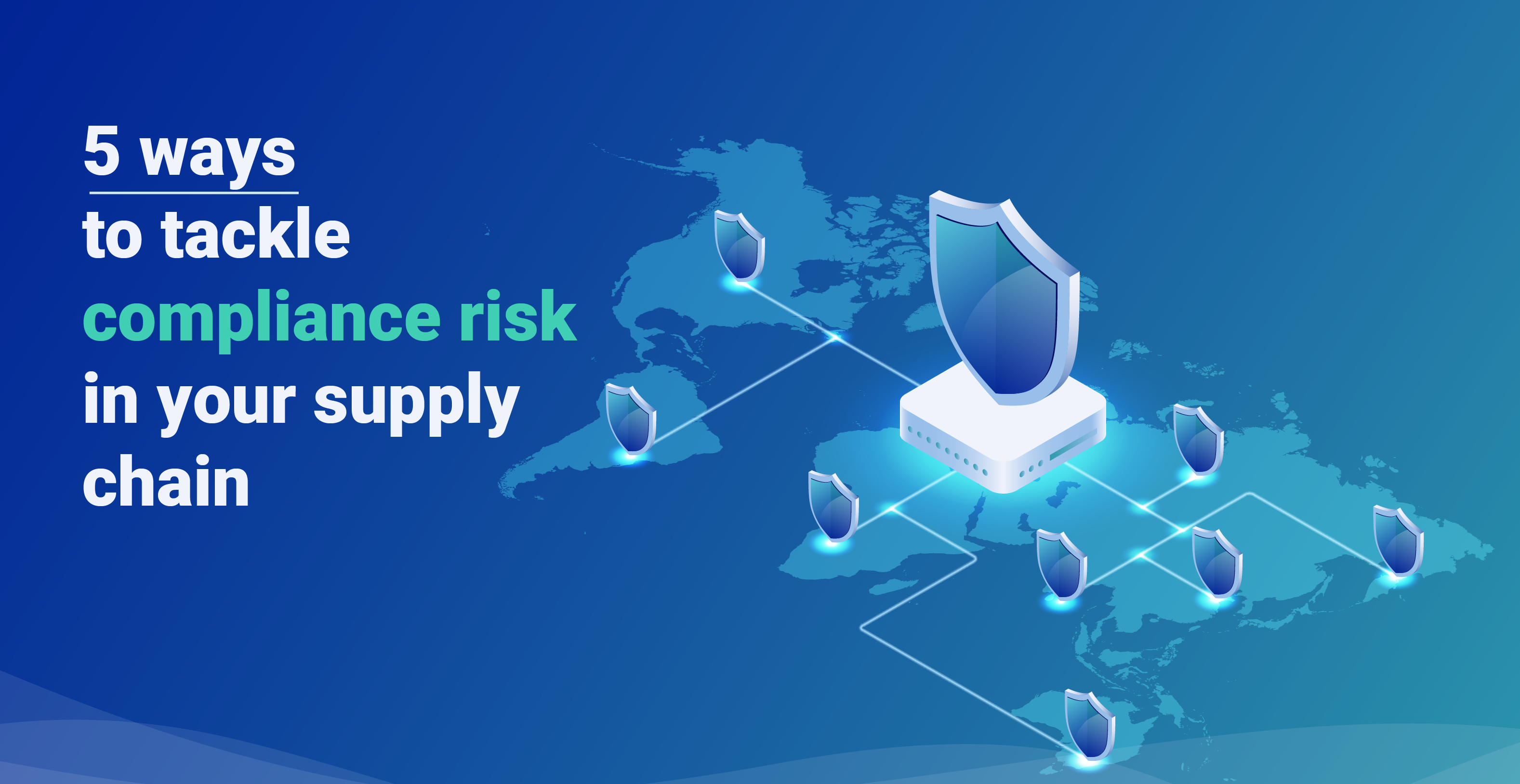
It is now more apparent than ever that food businesses must adopt centralised, digital supply chain management software to facilitate end-to-end supply chain visibility and cost reduction. However, the buck doesn’t stop there, businesses must make proper use of these systems by implementing stringent data capture, measurement and monitoring processes to effectively mitigate compliance risk.
Here are 5 ways you can tackle compliance risk in your supply chain:
1. Stage-Gated Approval Processes
When approving a new supplier for your food business, data integrity is key to protecting against new supplier risks. A stage-gated supplier approval process provides increased control over approved supplier lists by ensuring each information request is completed, reviewed and approved in line with set criteria before the supplier can achieve ‘approved’ status. The approval criteria will depend largely on the supplier type, but will typically include specific document shares, questionnaire completion, risk assessment scores etc. The aim of this controlled process is to gain a complete overview of the suppliers business and their ability to operate in compliance with governmental and organisational requirements. Assign specific task reviewers and approvers to ensure data integrity is maintained throughout the process. This ensures supplier data cannot be tampered with, or any stage skipped; And if queries arise, they can be investigated with the assigned personnel for quick resolution.
2. Ongoing Supplier Risk Assessment
Supplier risk assessment should always be a critical element within your stage-gated approval process, as this is your chance to directly assess specific supplier risks. It is important that any risks identified are effectively translated into business impact. Always ask yourself, “How could this supplier risk impact my supply chain?” And “What contingency can I put in place to mitigate this?” For instance, do you need to differentiate your supply base for a product to ensure continuity of supply?
Supplier risk assessments are not exclusive to initial supplier approval, and should be revisited at regular intervals to address new or developing risks. The frequency that supplier risk assessments are conducted will largely depend on the supplier type and their perceived risk level. For instance, during supplier approval a supplier is marked as high risk, this should inform a decision to monitor this supplier more closely by assigning a more frequent risk review period. As the market continues to evolve with rising cases of adulteration and contamination, businesses must place supplier risk assessments at the forefront of their supplier compliance management strategies.
3. Compliance Trend Analysis
Identifying and mitigating risks on a case by case basis is simply not enough. Businesses must collate, track and analyse supplier compliance and risk data in its entirety to truly understand the level of risk. Compliance data can include audit results, risk levels, questionnaire completion, document shares and everything in between; With such a vast range of data, a user friendly analysis and reporting platform is imperative to identifying trends and taking action. This will not only provide visibility over where the issues lie in your business, but also allows you to see how issues have progressed overtime to determine their severity and the action to be taken.
For instance, you may notice a trend that 50% of beef suppliers have scored low on their last 2 factory audits, or identify slipping standards in other areas. Armed with this information your business has the power to make truly informed decisions about your supply base. Should you choose to source from alternative suppliers? Or maybe you want to develop an improvement plan for suppliers with declining performance to mitigate risk. Data trend analysis will give you the answers you need.
4. Mapping your Supply Chain
Thorough supply chain mapping is the difference between simply knowing that risks exist and knowing where exactly they lie, how they impact your overall supply chain and how to react. The process involves documenting information on all supply network links including, companies, individuals, and products or materials, to create a tiered global supply chain map. By centrally capturing intrinsic data across all supply networks, you can gain increased control of the uncontrollable. For instance, if a supplier is experiencing an unexpected shortage due to supplier issues further down the chain, supply chain mapping can be used to ensure continuity of supply. Instant visibility of each touchpoint within your supply base that could potentially be compromised by the problem supplier, makes it possible to rapidly identify alternative suppliers within your network. Equally, supply chain mapping can be used in instances of food safety, food fraud and other issues that may impact business supply or reputation.
5. Horizon Scanning
All of the above steps provide an optimised framework for conducting due diligence throughout your supply network. However, food safety incidents can often go undetected until its too late, resulting in the need for rapid product recalls; But how can your business be prepared? Horizon scanning is a critical element to ensuring compliance in the food industry, and involves collating trend information on past, present and anticipated incidences that could potentially compromise your supply network. Due to the vast nature of the market it is important that this data is collated centrally to facilitate analysis and trend reporting that informs supply chain decisions.
Natalie Thorpe
A graduate of Letterkenny Institute of Technology, Natalie studied Visual Communication and Graphic Design. When she's not creating up new designs for company materials and branding, writing, compiling marketing plans or implementing new UX strategies, you'll find her roaming a deserted beach in search of her disappearing dog, or soaking up different cultures on her globetrotting adventures!
Stay up to date
Stay up to date
Browse Posts
- December 2025
- November 2025
- October 2025
- September 2025
- August 2025
- July 2025
- June 2025
- May 2025
- April 2025
- March 2025
- February 2025
- January 2025
- December 2024
- November 2024
- October 2024
- September 2024
- August 2024
- July 2024
- June 2024
- May 2024
- April 2024
- March 2024
- February 2024
- January 2024
- December 2023
- November 2023
- October 2023
- September 2023
- August 2023
- July 2023
- June 2023
- May 2023
- April 2023
- March 2023
- December 2022
- November 2022
- October 2022
- September 2022
- August 2022
- July 2022
- June 2022
- May 2022
- April 2022
- March 2022
- February 2022
- January 2022
- December 2021
- November 2021
- October 2021
- August 2021
/1.%20HubSpot%20Images/AdobeStock_444686342.jpeg)
/Blog%20Headers/shutterstock_1927957907%20(1).jpg)
/Blog%20Headers/shutterstock_1845178195%20(2).jpg)
/Blog%20Headers/shutterstock_2133827717%20(1).jpg)
/Blog%20Headers/shutterstock_2473376713.jpg)
/Blog%20Headers/shutterstock_2247276303.jpg)
.png)
.png)



/Graphics%20used%20in%20blogs/temple%20grandin%20visit%202024%2006.jpg)
/Blog%20Headers/Keith%20Cole%20Hi%20Res%20(1).png)
.png)

/Blog%20Headers/NPD_screen%20and%20test-1.jpg)
.png)
.png)
.png)
.png)
.png)